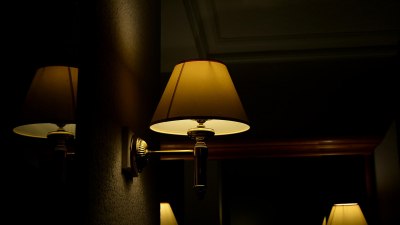Why Your Hotel Room Always Has One Flickering Lightbulb
Discover common reasons why hotel rooms often have a flickering lightbulb and how to address them.

For many travelers, a stay in a hotel is a mix of excitement and unpredictability. While most hotel experiences are pleasant, guests often find themselves dealing with minor inconveniences. One of the most common annoyances encountered in hotel rooms is the presence of a flickering lightbulb. This seemingly trivial issue can lead to a range of discomforts during a stay. In this article, we will explore the reasons behind this ubiquitous problem and suggest ways to deal with it effectively.
The Common Occurrence of Flickering Bulbs
In numerous hotel rooms around the world, the sight of a flickering lightbulb seems almost inevitable. Guests often arrive to find that one or more bulbs are not functioning correctly, and while it can be irritating, it’s essential to understand the factors that contribute to this situation. From energy-efficient lighting systems to neglected maintenance, several variables play a role in why a lightbulb flickers.
1. Maintenance Negligence
One of the primary reasons behind flickering bulbs in hotels is the maintenance practices (or lack thereof) in place. Hotel management is often pressed for time and resources, resulting in delayed inspections and repairs. Over time, light fixtures accumulate dust and debris, which can lead to interference with the bulb's performance. Additionally, if staff do not routinely check each room for potential issues, a flickering bulb may go unnoticed until a guest raises the concern.
2. Aging Infrastructure
Many hotels, particularly older establishments, face the challenge of aging electrical systems. These systems may not be equipped to handle the demands of modern lighting. An older electrical circuit can lead to fluctuating voltage, causing lightbulbs to flicker. Moreover, as electrical systems age, the connections may become loose or corroded, which can further contribute to the flickering effect.
3. Types of Lightbulbs Used
The type of lightbulb used in hotel rooms can significantly impact how often guests experience flickering. Compact fluorescent lamps (CFLs) and LED bulbs, which are commonly used due to their energy efficiency, can also be prone to flickering in certain conditions. For instance, if a CFL is nearing the end of its life cycle, it may begin to flicker as it struggles to maintain consistent light output. Similarly, some LED bulbs may flicker when they are incompatible with specific dimmer switches or if there are voltage fluctuations.
4. Dimmer Switches and Compatibility Issues
When hotels utilize dimmer switches in guest rooms, compatibility between the bulb and the dimmer can sometimes lead to flickering. Traditional incandescent bulbs work well with dimmers, but when energy-efficient bulbs are used, they may not be designed to handle dimming levels efficiently. This problem can become evident as the wattage decreases, resulting in a less stable light output. If guests notice flickering, it may be due to this incompatibility.
5. Electrical Voltage Fluctuations
Electrical voltage fluctuations can impact how effectively bulbs operate. In hotels, where multiple guests might be drawing power at once during peak times (for example, when many guests plug in electronic devices), the electrical load can cause temporary fluctuations. This pressure on the electrical system can result in intermittent power to light fixtures, leading to flickering lights. This situation is often more prevalent in older buildings where the electrical grid may not be designed to handle current demands.
6. The Impact of Temperature
Lightbulbs may also flicker due to temperature changes within the hotel room. HVAC systems can create dramatic temperature variations that affect electrical components. For example, rapid cooling in a hotel room might lead to temporary fluctuations in the electrical circuit, which may cause a bulb to flicker. Hotels located in regions with extreme temperatures may experience this effect more frequently.
7. Guest Responsibility and Interaction
It’s essential to note that guests themselves sometimes contribute to the flickering light issues. When guests try to adjust or replace lightbulbs without notifying hotel staff, they may inadvertently create their own problems. Guests may not always recognize that some bulbs are installed with a specific purpose or that tampering with systems can lead to further disruptions in service. Observing hotel guidelines instead of attempting DIY fixes can help maintain a better experience for all.
8. Lack of Guest Feedback Mechanisms
Many hotels do not have an efficient system in place to collect guest feedback regarding room conditions. As a result, management may remain unaware of recurring issues such as flickering lights. Establishing easy channels for guests to report these problems can enhance the hotel's responsiveness to maintenance needs. Hotels that prioritize guest feedback often experience improved satisfaction rates, as minor issues such as flickering lights can be resolved quickly.
9. The Psychological Effect of Flickering Lights
Flickering lights can have a psychological impact on guests, causing feelings of discomfort or anxiety. The repeated interruptions in lighting can disrupt concentration, leading to frustration. For many, the presence of a flickering bulb can create a sense of unease, especially if the hotel is perceived as being low-quality or poorly maintained. It is essential for hotel management to consider the psychological implications of maintenance issues and how they affect the overall guest experience.
10. Building a Strategy for Improvement
To address the flickering light issue comprehensively, hotels can adopt proactive maintenance practices. Regular inspections of light fixtures and electrical systems should be scheduled to pinpoint potential problems before they escalate. Training staff to recognize flickering lights and report them readily will ensure that the hotel's upkeep is consistently maintained. Additionally, hotels should consider transitioning to higher-quality lighting solutions that minimize flickering and maximize durability.
In conclusion, the fluttering of a lightbulb in a hotel room is often more than just a nuisance; it reflects larger systemic issues within a hotel's maintenance and operational protocols. By understanding the underlying causes and implementing effective strategies for improvement, hotel management can provide a more comfortable and enjoyable experience for guests. Ultimately, the goal is to create an atmosphere where guests can relax and unwind without the distraction of a flickering bulb dimming their spirits.











